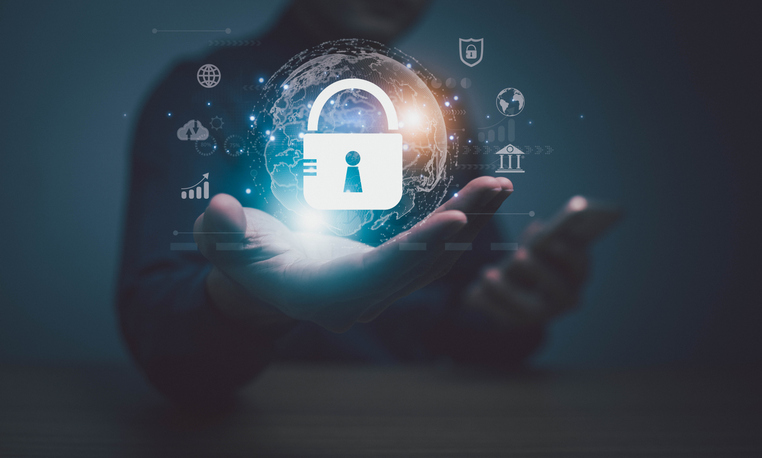Building a Zero Trust Network to Prevent Ransomware
Understanding the Threat of Ransomware
Zero Trust architecture for ransomware prevention is becoming increasingly critical as the threat of ransomware continues to evolve. As we at Alvaka witness the growing sophistication of ransomware attacks, we understand the importance of adopting proactive cybersecurity measures. Ransomware is not just a threat to large corporations; small and medium-sized businesses are equally at risk. These malicious software variants encrypt valuable data, demanding a ransom for its release, and can cause significant operational disruptions.
Zero Trust Architecture: The Proactive Defense Against Cyber Threats
Zero Trust architecture positions itself as a formidable defense mechanism against these insidious ransomware attacks. By operating under the principle of “never trust, always verify,” our Zero Trust approach ensures that not a single entity within the network is trusted implicitly. Instead, it mandates continuous verification of all users and devices, whether inside or outside of the network perimeter, before granting access to digital assets. This strategic shift from the traditional perimeter-centric security model to a more comprehensive, data-centric model greatly reduces the attack surface for potential ransomware incursions.
Establishing the Foundation for a Zero Trust Network
Establishing the foundation for a Zero Trust network is an essential step we take in safeguarding our clients’ digital resources against ransomware threats. This entails a thorough understanding of the network architecture and flows, identification of sensitive data, and the segmentation of resources to implement strict access control protocols. By meticulously mapping out the traffic and enforcing strict access controls, we minimize the lateral movement often exploited by ransomware to propagate through a system. At Alvaka, our commitment to implementing Zero Trust architecture for ransomware protection is instrumental in protecting our clients from the ever-present danger of cyber extortionists.
Key Principles of Zero Trust Architecture for Ransomware Prevention
At Alvaka, we prioritize the security of our clients by implementing a robust Zero Trust architecture for ransomware. This strategic approach revolves around several key principles designed to proactively defend against cyber threats. The first principle is “never trust, always verify,” which means that all users, whether inside or outside of the network, must be authenticated, authorized, and continuously validated before being granted or retaining access to applications and data. Additionally, we apply the least-privilege access rule to limit user access to the minimum level necessary for their job functions, thus reducing the potential impact of a breach.
Implementing Zero Trust Controls and Technology to Thwart Ransomware
To mitigate the risk of ransomware, we implement stringent access controls and technologies that embrace the Zero Trust principles. We utilize multi-factor authentication (MFA) to ensure that the identity of any individual attempting to access the network is rigorously confirmed. Furthermore, we adopt micro-segmentation to create secure zones in networks, thereby isolating critical systems and protecting them from unauthorized lateral movement. Additionally, our encryption of sensitive data acts as a solid line of defense, making it indecipherable to unauthorized parties should they gain access.
Case Studies: Zero Trust Architecture Thwarting Ransomware Attacks
- An Enterprise Health Provider: Once left vulnerable to cyber threats, they partnered with us to implement a Zero Trust framework. The move effectively blocked a sophisticated ransomware attack that would have cost millions in damages and loss of patient trust.
- A Financial Services Firm: By adopting our Zero Trust controls and policies, they halted an ongoing ransomware campaign, protecting their extensive customer financial records and maintaining their industry reputation for security.
- Local Government Infrastructure: Tasked with securing citizen data, they utilized our Zero Trust architecture strategies to thwart an attack that aimed to disrupt public services, averting a potential crisis for the community.
Did you know that Zero Trust Architecture can significantly reduce the risk of ransomware attacks by requiring strict identity verification for every user and device attempting to access resources on a network?
The Role of Continuous Monitoring and Analytics in a Zero Trust Strategy
In the ever-evolving cyber threat landscape, continuous monitoring and analytics are vital components of a ransomware recovery plan within a Zero Trust architecture for ransomware. At Alvaka, we understand that the security of your network cannot rely on static defenses. Therefore, our approach leverages real-time analytics to detect unusual behavior that often precedes a cyber attack. By constantly analyzing network traffic and access requests, we can swiftly identify and respond to potential threats, ensuring your infrastructure remains resilient against the sophisticated tactics deployed by ransomware attackers.
Future-Proofing Your Network with Zero Trust Architecture for Ransomware Defense
As technology continues to evolve, so do the methods used by cybercriminals. We recognize the importance of not just responding to current threats, but also preparing for future risks. Incorporating a Zero Trust architecture for ransomware defense is a commitment to adaptability. Our strategies are designed to evolve with changing cyber threats, ensuring that your network security posture remains robust and one step ahead. By implementing stringent access controls, encrypting data, and ensuring the principle of least privilege, we help to minimize the attack surface and future-proof your business against emerging threats.
Taking the First Step Towards Zero Trust: Partnering with Security Experts
To effectively counter the threat of ransomware, it’s essential to start with expert guidance. Our team at Alvaka is adept at crafting tailored Zero Trust strategies that fortify your IT infrastructure. We work closely with you to assess vulnerabilities, implement advanced security solutions, and conduct thorough training for your staff. By partnering with our security experts, you’re not just adopting a Zero Trust architecture; you’re also ensuring that your network is equipped with a proactive and resilient defense against the onslaught of ransomware attacks. Take the first step towards a secure future by embracing a Zero Trust approach designed to protect your most valuable digital assets.
FAQ
What is ransomware and how does it pose a threat to our network? ▼
Ransomware is a type of malicious software designed to block access to a computer system or data until a sum of money is paid. For our network, it poses a significant threat by potentially encrypting critical data, disrupting operations, or causing financial and reputational damage.
What is Zero Trust Architecture? ▼
Zero Trust Architecture is a security model that operates under the principle that no user or system should be trusted by default, whether inside or outside the network perimeter. Access must be verified continuously to ensure the security of our network.
How can Zero Trust Architecture prevent ransomware attacks? ▼
By adopting a Zero Trust Architecture, we minimize the attack surface that ransomware can exploit. This is achieved by enforcing strict access controls and not assuming trust based on location or asset, thereby reducing the possibility of unauthorized access and lateral movement within our network.
What are the key principles of Zero Trust Architecture? ▼
The key principles include verifying the identity of users and devices before granting access, enforcing least-privilege access, and assuming that the network is always compromised, thereby implementing robust security measures for constant vigilance.
What technologies are implemented in a Zero Trust network to combat ransomware? ▼
We implement technologies such as multi-factor authentication (MFA), identity and access management (IAM), endpoint security, micro-segmentation, and encryption to enforce Zero Trust principles and protect against ransomware.
Can you provide examples where Zero Trust Architecture has stopped ransomware attacks? ▼
Certainly, there are many instances where organizations with Zero Trust controls have successfully mitigated ransomware attacks. For instance, companies with strict access controls and segmented networks have effectively contained attacks, preventing the spread of ransomware, consequently, protecting their critical systems and data.
How does continuous monitoring improve our ransomware defense? ▼
Continuous monitoring is essential in detecting any suspicious activity or potential breaches promptly. It enables us to respond quickly to threats and adapt our defenses, therefore maintaining the integrity of our Zero Trust security posture against ransomware.
What does future-proofing our network against ransomware involve? ▼
To future-proof our network against ransomware, it involves staying ahead of emerging threats by adopting and adapting new security technologies and practices within our Zero Trust framework, ensuring that our defenses evolve with, if not outpace, cyber threats.
What are the first steps we should take towards implementing Zero Trust? ▼
The initial step in adopting Zero Trust involves conducting an assessment of our current security posture and identifying areas for improvement. Partnering with security experts to design and implement a Zero Trust strategy tailored to our unique needs is crucial.
Why should we partner with security experts for Zero Trust implementation? ▼
Partnering with security experts ensures that we leverage specialized knowledge and experience to build a robust Zero Trust network. Such expertise is vital for seamlessly integrating the right technologies and protocols that align with our organizational goals and security requirements.








 Smoke testing is a term used to describe the testing process for servers after patches are applied.
Smoke testing is a term used to describe the testing process for servers after patches are applied.  This is a basic cost calculator for you to compute your typical monthly cost for patching your servers, PCs, laptops, tablets and associated application software. It also forms the basis for you to begin calculating your Return on Investment for software patching, or for comparison with alternatives to the manual process of patching operating systems and application software—such as Patch Management as a Service, also known as Vulnerability Management as a Service.
This is a basic cost calculator for you to compute your typical monthly cost for patching your servers, PCs, laptops, tablets and associated application software. It also forms the basis for you to begin calculating your Return on Investment for software patching, or for comparison with alternatives to the manual process of patching operating systems and application software—such as Patch Management as a Service, also known as Vulnerability Management as a Service.